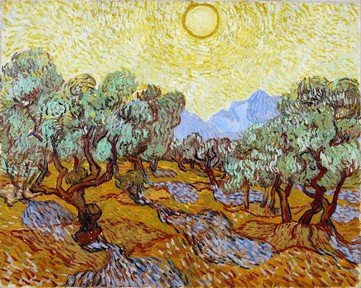Quiz Answer Key and Fun Facts
1. Painted in 1646, "Winter Landscape" is an eerily beautiful oil on oak panel. You probably associate this artist with portraits and religious scenes, but this work truly displays his versatility. Who is this great Dutch artist?
2. Painted around 1769, "Ride to the Market" is genre painting by an artist mostly associated with portraits and landscapes. Who is this great English artist?
3. Dating from around 1515, "The Miraculous Draft of Fishes" is a drawing on charcoal. We usually associate him with portraits and allegorical scenes, so this is a fairly unusual work. Who is this master artist of the High Renaissance period?
4. Painted in 1658, "The Courtyard of a House in Delft" is one of a selection of genre paintings in similar style by this artist. Known particularly for depicting quiet domestic scenes with few figures, who is this artist from the Dutch Golden Age?
5. Painted in the 1880s, "Jewish Wedding" is an oil on canvas capturing a scene that we would today record on film or video. The artist who painted it is known for works in all genres, but particularly for those capturing female sensuality. Who is this artist, one of the leaders in the development of Impressionism?
6. Painted around 1758-59, "The Lady's Last Stake" is an oil on canvas also sometimes called "Virtue in Danger". Who is this English painter whose works range from realistic portraiture to comic strip-like series of pictures?
7. Painted in 1567, "The Peasant Wedding" is an archetypal example of 'genre painting' from perhaps the greatest master of the style. Who is this Dutch Renaissance painter who is best-known for his landscapes and peasant scenes?
8. Painted in 1618-19, "Farmers at the Supper" is an oil on canvas by an artist whose work we have seen in other rooms within our virtual gallery. Who is this former court painter renowned for his portraits and one of the great artists of the Spanish Golden Age?
9. Painted in 1873, "A Cotton Office in New Orleans" depicts a personal scene from the life of a young French artist in the U.S.A.; it was also the first work by this artist purchased by a museum. Who is this artist, one of the great classical painters of modern life?
10. Dating back to 1669, "The Geographer" is an oil on canvas by an artist who produced relatively few paintings, but is now recognized as one of the greats of the Dutch Golden Age. Who is this painter who specialized in depicting domestic scenes of middle-class life?
Source: Author
EnglishJedi
This quiz was reviewed by FunTrivia editor
looney_tunes before going online.
Any errors found in FunTrivia content are routinely corrected through our feedback system.

